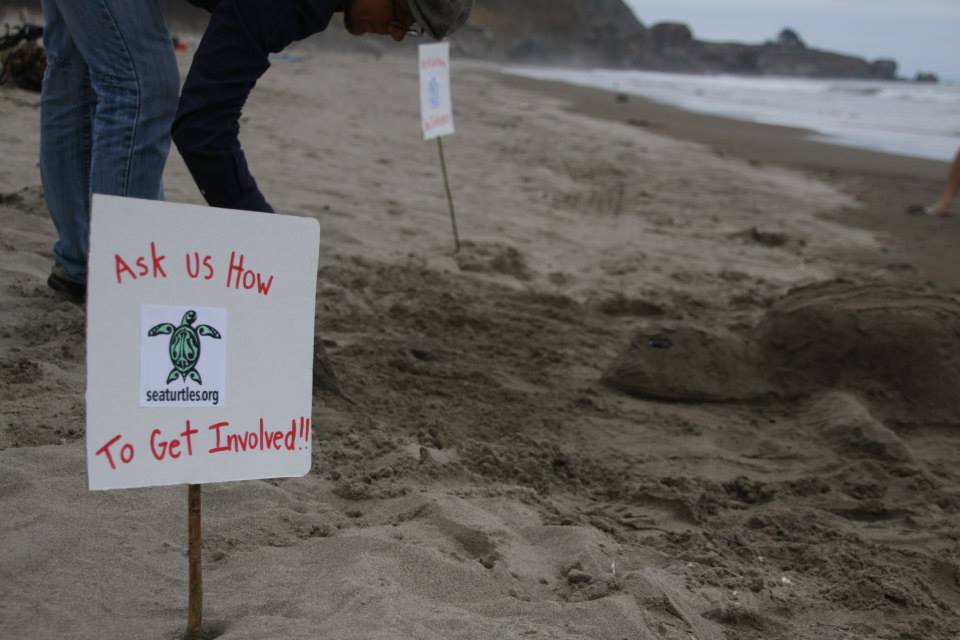The Arrival
Golden hills, blue skies, warm weather, the bay, and the Pacific Ocean surrounded me as I arrived in Marin County in California. The vista at my internship is breathtaking, especially with the common modes of transportation being hiking and biking.
My internship at Turtle Island Restoration Network sits on national park land in Olema. Since starting my internship a little over a month ago, I have watched and been watched by deer, grey fox, and wild turkey as they wander the property as I work. Additionally, there are signs of raccoons, river otters, and bobcats on the property evidenced by viewing camera recordings and the tracks they left behind.
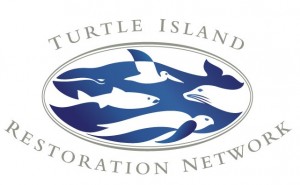
The Non-Profit Organization
Turtle Island Restoration Network advocates for the world’s oceans and marine wildlife through science advocacy, grassroots empowerment, consumer action, hands-on restoration, environmental education, and promotion of sustainable marine policies. They do this by using science in efforts to preserve and restore critical habitats, as well as through outreach, education, and policy change. Turtle Island reaches internationally with projects in California, Costa Rica, and other locations. SPAWN, a branch of the organization, focuses primarily on the health of the local watershed for the endangered Coho salmon.
Turtle Island’s mission is to bring people from around the world together to protect marine wildlife, oceans, and inland watersheds. In order to do this, they require hard work from employees as well as great deal of help from interns and volunteers. There are volunteer days where hands on experiences are given during restoration efforts. This experience extends to local schools and camps, where children learn through participation (such as beach cleanup, restoration, transplanting, etc.).
During my time here, I have had the opportunity to be involved in a number of efforts in various projects. Because of this, I believe I will gain a lot from my internship. More specifically, I will use my education at Bard Center for Environmental Policy as a solid basis of understanding, and my creativity as a tool.
The Experience
Cocos/Galapagos Project
My primary focus has been on a project in the Cocos and Galapagos Islands. I have compiled research on the science and policy behind an issue in order to protect the migratory turtles and sharks. Since they are using a top-down approach and will not be presenting to scientists, the visual representation is important to convey the science in a way that is understood. I was able to use science communication skills to help with the written aspect, and use my art skills to create a conceptual map on Photoshop and a leaflet design in order to present the issue in a flattering way.
California Sea Turtle
Some of my time has been focused on various other tasks, one being outreach. One of our projects is California Sea Turtle Hero, where we ask participants to build a sea turtle sand castle, take a photo, and submit it online for a chance to win a 3-night stay in La Jolla Coves Suites. This is to support the protection of sea turtles. I have gone to 3 different beaches to build my own sea turtle castle in order to promote the contest. Since beaches in this area are on national park land and we were unable to receive a permit, so we were only able to discuss our project. One of the more successful outreach efforts I was involved in occurred on Drakes Beach during a sand castle competition. This project has evolved into a coastal cleanup effort as well. I have done my own outreach efforts by picking up trash when I visit the beach. When people see me picking up trash, they make positive remarks, pick up trash themselves, and discuss the contest as well as coastal issues with me.
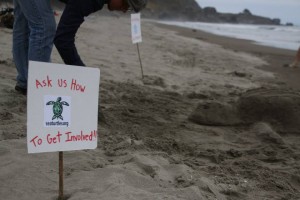
Summer Salmon Institute
During one week of my internship, I spent time working at Summer Salmon Institute – a week long hands-on teacher learning experience about watershed education. I participated in an exercise called each-one-teach-one, where each teacher had a short lesson that was one-on-one with the participant. Lessons included sensory as well as ecology and biology.
Furthermore, we did what was called a solo hike, where we each walked through a path alone to have time to think and be silent in nature. This is important for children, as most of their time is spent being with others. It gives them time to reflect.
Other exercises included collecting pH levels in the Lagunitas Creek Watershed, collecting macro-invertebrates in the creek and drawing them for identification, and experience transpotting in our native plant nursery. My time was mostly spent with the teachers collecting macro-invertebrates. I helped them collect, observe, and identify as well as taught what I knew about the organisms they found.
My favorite aspect of the trip was the last day, where a handful of teachers came with us on a 10-mile hike. Though there was no direct educational plan, talking to the teachers and their experiences as well as my own knowledge created such a positive learning experience. During this hike, no one person was the teacher, but rather we were educating as equals.
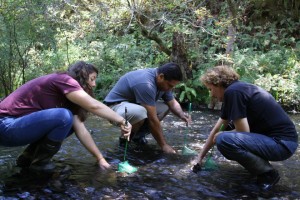
Other Unique Experiences
California as a whole is a wonderful place to learn about environmental issues, especially in Marin County. Though the internship has taught me a great deal, the people I meet throughout my travels have as well. I have gone on many hikes around the area, and I always meet others who educate me on the history and experiences they have had as concerned citizens. I have had the chance to meet those who work with river otters, nutritionists teaching children how to make less of an environmental impact on the world through the food they eat, and even yoga instructors who educate their students on environmental issues.
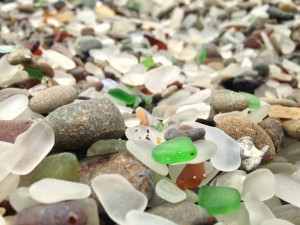
One story in particular interested me. A yoga teacher told me about Glass Beach in Fort Bragg. This was after she saw me with a handful of garbage I collected on the beach after our Stand Up Paddle Board class. In the early 1900’s, Fort Bragg residents were allowed to throw their garbage over the cliffs onto what is now Glass Beach. Though the Clean Water Act had not been written yet, in 1967 California State Water Resources Control Board and city leaders recognized the hazard and closed the area down. They may have closed down the area, but the garbage stayed, slowing turning to sea glass from the pounding waves. This terrible past has become a tourist attraction, so much so that there are those who want to add more glass since the beach is being cleaned up from tourists!
Overall, between the atmosphere of the location and the internship itself, this internship experience has already had an impact on my life.

